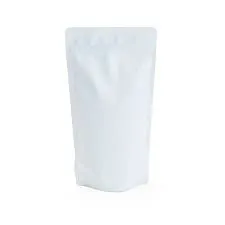- Afrikaans
- Albanian
- Amharic
- Arabic
- Armenian
- Azerbaijani
- Basque
- Belarusian
- Bengali
- Bosnian
- Bulgarian
- Catalan
- Cebuano
- chinese_simplified
- chinese_traditional
- Corsican
- Croatian
- Czech
- Danish
- Dutch
- English
- Esperanto
- Estonian
- Finnish
- French
- Frisian
- Galician
- Georgian
- German
- Greek
- Gujarati
- haitian_creole
- hausa
- hawaiian
- Hebrew
- Hindi
- Miao
- Hungarian
- Icelandic
- igbo
- Indonesian
- irish
- Italian
- Japanese
- Javanese
- Kannada
- kazakh
- Khmer
- Rwandese
- Korean
- Kurdish
- Kyrgyz
- Lao
- Latin
- Latvian
- Lithuanian
- Luxembourgish
- Macedonian
- Malgashi
- Malay
- Malayalam
- Maltese
- Maori
- Marathi
- Mongolian
- Myanmar
- Nepali
- Norwegian
- Norwegian
- Occitan
- Pashto
- Persian
- Polish
- Portuguese
- Punjabi
- Romanian
- Russian
- Samoan
- scottish-gaelic
- Serbian
- Sesotho
- Shona
- Sindhi
- Sinhala
- Slovak
- Slovenian
- Somali
- Spanish
- Sundanese
- Swahili
- Swedish
- Tagalog
- Tajik
- Tamil
- Tatar
- Telugu
- Thai
- Turkish
- Turkmen
- Ukrainian
- Urdu
- Uighur
- Uzbek
- Vietnamese
- Welsh
- Bantu
- Yiddish
- Yoruba
- Zulu
recyclable mono material packaging film
The Rise of Recyclable Mono Material Packaging Film A Sustainable Future
In recent years, the global packaging industry has faced significant scrutiny over its environmental impact. With concerns about plastic pollution and waste management rising to critical levels, manufacturers, businesses, and consumers alike have begun seeking sustainable alternatives that minimize ecological footprints. Among these solutions, recyclable mono material packaging films have emerged as a front-runner in the quest for greener packaging options.
Understanding Mono Material Packaging
Mono material packaging refers to packaging constructed from a single type of material, usually plastic. Unlike multi-material packaging that combines various materials, which can complicate recycling processes, mono materials are designed to be easily recyclable. This simplicity not only facilitates better waste management but also enhances the recycling rates of packaging materials.
Packaging films, often used in food and product packaging, are increasingly being created from mono materials to ensure that post-consumer waste can be efficiently processed and repurposed. Commonly used materials include polyethylene (PE) and polypropylene (PP), both of which are widely recyclable and suitable for various packaging applications.
Environmental Benefits
One of the most significant advantages of recyclable mono material packaging films is their potential to reduce environmental impact. Traditional multi-layered packaging often ends up in landfills because the different materials cannot be separated effectively. According to reports, less than 15% of plastic waste is recycled globally, with a significant part of this waste being non-recyclable packaging. In contrast, mono material films can be recycled in existing facilities without the need for complex sorting processes, leading to higher recycling rates.
Additionally, the use of recyclable mono material films can significantly decrease the carbon footprint associated with production and disposal. The materials used in these films typically require less energy to manufacture, and because they are designed for the recycling stream, they help close the loop in the lifecycle of plastics. The resulting recycled materials can be used to produce new packaging or other products, further reducing reliance on virgin resources.
Innovations in the Industry
recyclable mono material packaging film

Advancements in technology and material science have propelled the development of innovative recyclable mono material films. Brands and suppliers are now focused on creating films that not only perform well but are also sustainable. For example, some companies are experimenting with bio-based materials that provide the same durability and flexibility as conventional plastics while being more environmentally friendly.
Moreover, several major brands have pledged to adopt recyclable mono material films in their packaging strategies. This shift is a direct response to consumer demand for greener packaging solutions and a commitment to corporate sustainability goals. As companies pivot towards these materials, they set a precedent for the industry, encouraging more manufacturers to follow suit.
Consumer Awareness and Preferences
Consumer awareness surrounding sustainability is at an all-time high. More individuals are seeking out products packaged in recyclable materials, and they expect brands to take responsibility for their environmental impacts. This shift in consumer behavior is driving businesses to adopt sustainable packaging practices as part of their brand identity.
Recyclable mono material packaging films not only meet consumer expectations but also provide an opportunity for brands to differentiate themselves in a competitive market. Packaging that is aesthetically pleasing, functional, and sustainable creates added value in the eyes of environmentally conscious consumers.
Challenges and Future Outlook
Despite the advantages of recyclable mono material packaging films, challenges remain. One of the primary obstacles is the lack of infrastructure in certain regions for recycling these materials effectively. Additionally, there is a need for increased education on proper recycling practices to ensure that consumers utilize recycling facilities correctly.
To further promote the adoption of recyclable mono material films, collaboration between governments, industries, and consumers is vital. Incentives for recycling programs, investment in better recycling technologies, and widespread education campaigns can foster a more conducive environment for sustainable packaging solutions.
As we look to the future, recyclable mono material packaging films represent a pivotal step toward a circular economy. By embracing these innovations, the packaging industry can substantially mitigate its environmental impact, meet the desires of eco-conscious consumers, and contribute to a cleaner planet. The collective effort from everyone—manufacturers, brands, and consumers—will ultimately determine the success of the transition towards truly sustainable packaging. As we embark on this journey, it is clear that recyclable mono material films hold the promise of a more sustainable future for all.













